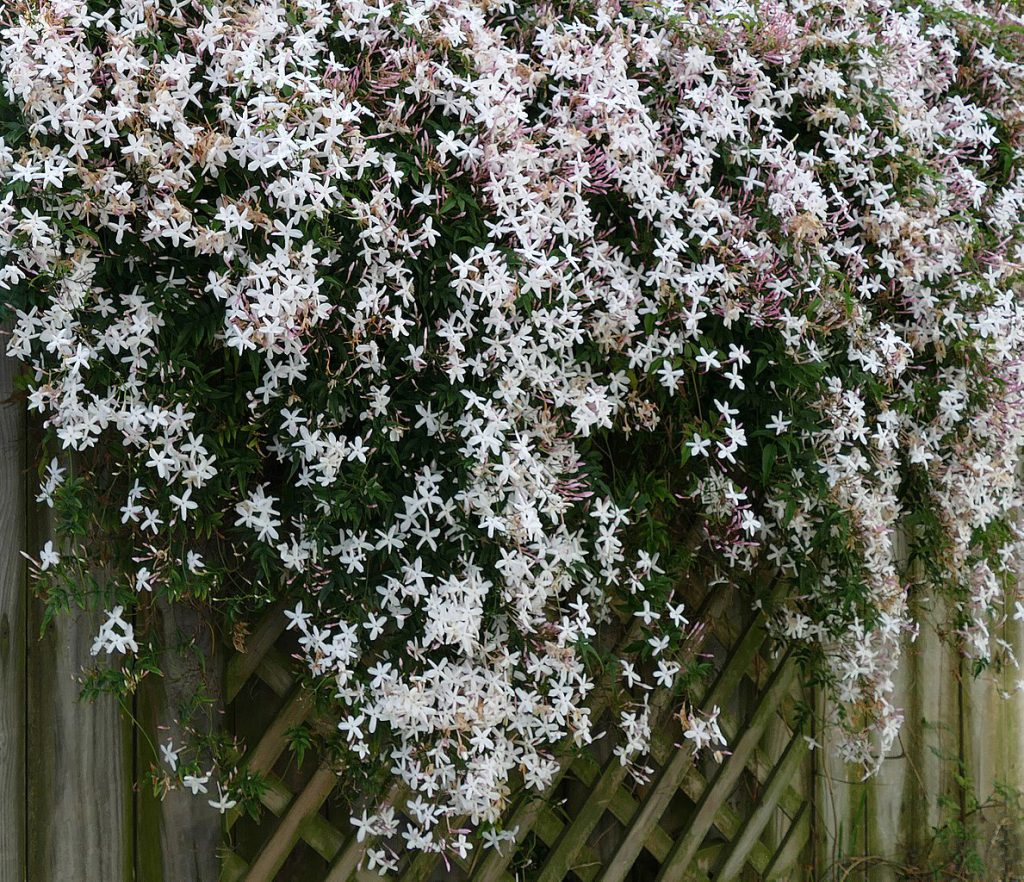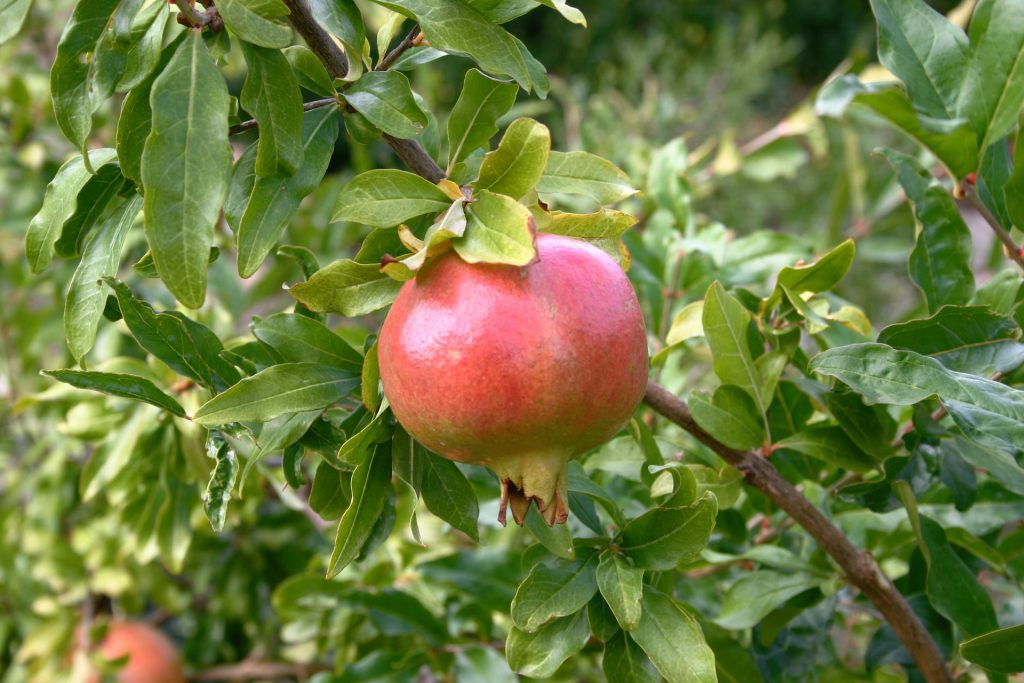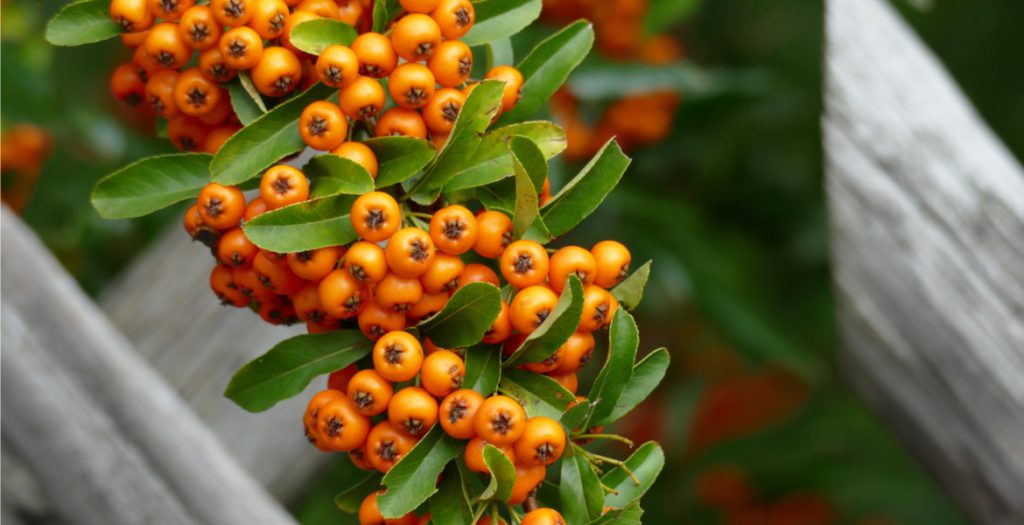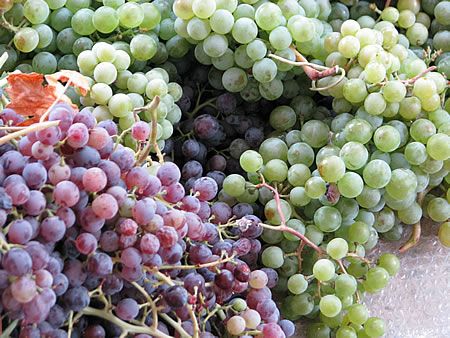From its beautiful blooms to its fresh fragrance, jasmine is one of the loveliest flowers to incorporate into your indoor jungle or outdoor garden. Of course, it can be a notoriously tricky plant to figure out, especially if you’re a flower novice. But once you’ve figured out its needs and how to best incorporate it into your garden, you’ll be rewarded with long periods of gorgeous, aromatic blooms.
Jasmine is an incredibly versatile plant when it comes to landscaping.
Depending on the variety, you can grow it as a groundcover, let it climb on a trellis, or even keep it as a potted plant indoors. It’s best known for its dainty blooms that can be yellow, white, or cream in color – and certain varieties can even produce pink flowers.
Some jasmine plants are evergreen, so their leaves stay green and glossy all year long instead of dropping during the autumn and winter. There’s a wide range of jasmine, from common white jasmine that blooms in the late spring to winter jasmine, which puts out flowers during late winter.
What’s most notable about jasmine is that the blooms smell like a sweet, light perfume, which attracts hummingbirds, bees, and butterflies. The strong smell can irritate those sensitive to fragrances so keep in mind anyone who may be in contact with jasmine before you plant it.
Planting Jasmine plants
Planting jasmine is easy. Just follow these simple tips.
When to plant jasmine – Plant jasmine bushes any time between June and November.
Where to plant jasmine – Jasmine will grow well in full sun to partial shaded areas. Summer-flowering jasmine does better in a sunny spot, while other varieties, such as winter jasmine, like a more shaded area.
Soils that jasmine thrive in – Jasmine needs well-drained but moist, moderately fertile sandy loamy soil.
Supports for jasmine – If planting a twining vine variety and wanting jasmine to climb, the plant will need a support structure. A trellis or fence will both work.
How to space jasmine – Jasmine should be planted at least 8 feet, sometimes more depending on variety, apart to accommodate for its future root growth, as it will grow tremendously and does not like to be crowded.
How deep to plant – Dig a hole for the jasmine that is just deep enough so the plant will rest at the same level in the ground as it was when it was in the pot. It doesn’t need to be planted in a deep hole.
Light needs
Like most plants, jasmine can be a bit finicky when it comes to how much and what kind of light it gets.
If growing outdoors, keep the jasmine in either partial shade or full sun, depending on the specific jasmine variety.
If growing indoors, place the jasmine near a south-facing window. Supplement with grow lights if necessary.
Temperature and jasmine varieties
In addition to adequate light, jasmine benefits from warm temperatures. Its sweet spot temperature-wise is around 16 – 24 degrees Celsius, although it’s usually hardy down to 4 degrees Celsius.
If you live in an area prone to winters where temperatures regularly dip below 4 degrees Celsius, bring your plant indoors if it’s kept in a pot. You could also place your outdoor plant into a greenhouse or mulch it with compost to offer it protection.
Jasmine plants are typically hardy to zones 7 through 10, but cold hardiness depends on the variety. If you live in a cold climate, Asian star jasmine will be hardier while Arabian jasmine will thrive in a warm, humid region. Pick the variety best suited for your area for the most prolific plant possible.
Water needs
Jasmine appreciates adequately moist, fertile soil.
Plant the jasmine in a sandy, loamy mix to make sure the soil retains moisture but not so much as to cause root rot.
Water your jasmine plant weekly. During hot, dry weather, you will likely need to water more often, as the plant is native to tropical regions and will not tolerate drought.
Repot the plant if it becomes rootbound to ensure it gets adequate water.
Pruning jasmine
Jasmine is a pretty versatile plant when it comes to landscaping.
If you enjoy the vining look, you can train the jasmine to climb up a wall or fence with a trellis or some type of wiring.
To maintain a shrub-like look, keep the jasmine in the ground or in a large planter.
Use sharp, sterilized shears to prune the jasmine. Doing so will encourage new growth and remove diseased, damaged, or tangled branches. Just remember to prune right after the plant flowers so that it has time to recover by the next time it’s ready to bloom.
If you notice branches growing in an awkward direction, prune them back and use a trellis or wire to retrain them.
Encouraging jasmine to bloom
Proper feeding and pinching can help jasmine bloom throughout its growing season.
When your jasmine pushes out new growth, give it a blooming fertilizer every week; a diluted 7-9-5 fertilizer high in phosphorus works best for flower production. Do not use a fertilizer too high in nitrogen, as that will encourage foliage growth at the expense of blooms.
Pinch off spent blooms to help extend the blooming period.
Growing jasmine can be a daunting undertaking, especially if you’re not familiar with taking care of flowers. Thankfully, though, it’s really much easier than it might seem at first. It all starts with finding the appropriate cultivar for your climate zone so that you have the best shot possible at nourishing a lush and healthy plant. Then, provide your jasmine with plenty of warmth and sun, fertilize adequately, and prune as needed. Before you know it, you’ll be on your way to enjoying beautiful, fragrant blooms!
After flowering has ended and to help the jasmine plant produce even more flowers the following year, it is useful to prune the plant. It is advisable to prune in two stages: in autumn or early winter and once it has stopped flowering make sure to remove all the previous year’s dry flowers and in early spring, once the long cold spells have passed, prune the branches a little more vigorously so that you can check both the size and shape of the plant.
Greek name: Γιασεμί.
Sources: https://www.valentine.gr/jasminum_gr.php, https://www.happysprout.com/indoor-plants/jasmine-plant-care/, https://gilmour.com/jasmine-care





